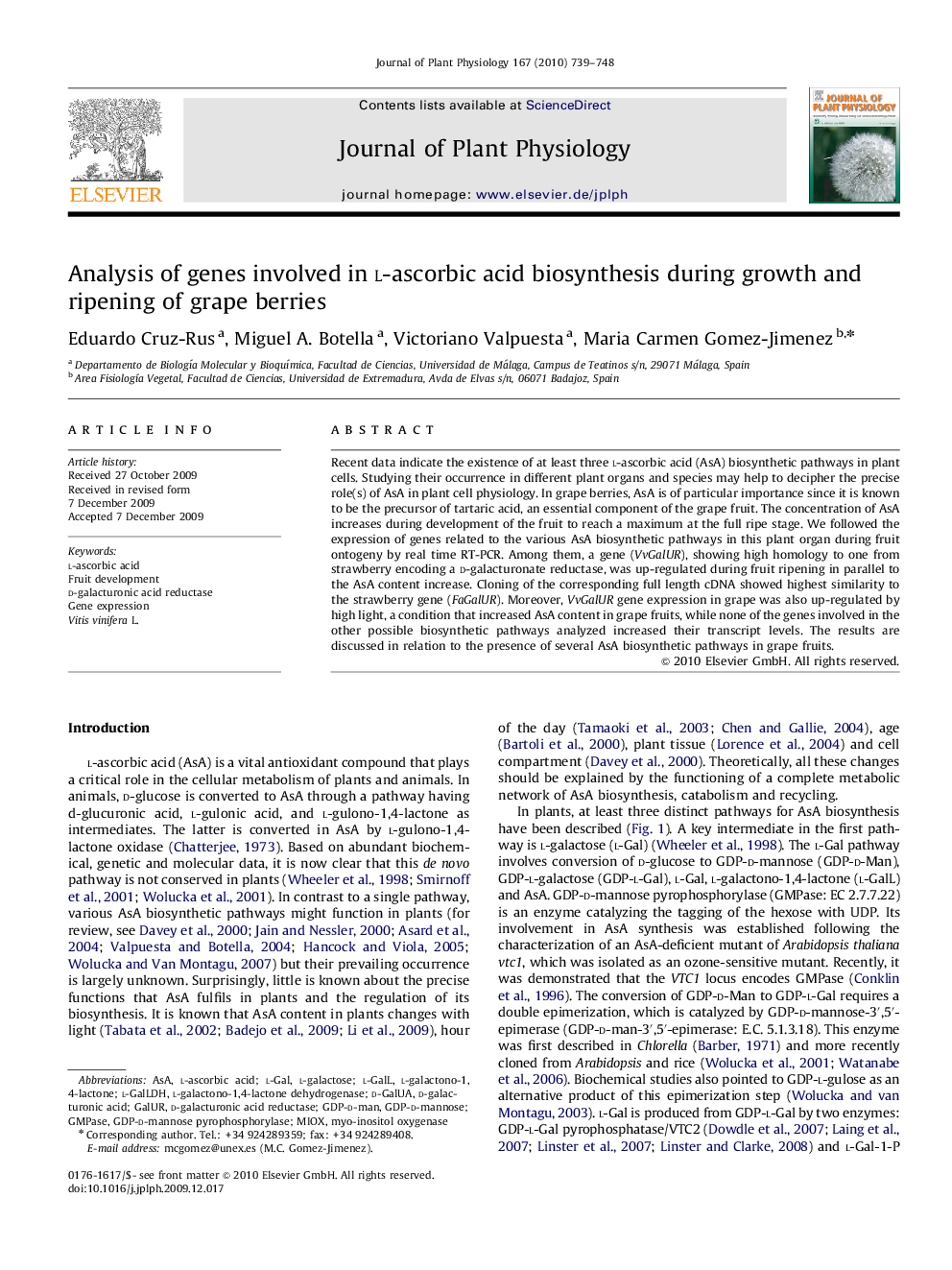| Article ID | Journal | Published Year | Pages | File Type |
|---|---|---|---|---|
| 2056841 | Journal of Plant Physiology | 2010 | 10 Pages |
Recent data indicate the existence of at least three l-ascorbic acid (AsA) biosynthetic pathways in plant cells. Studying their occurrence in different plant organs and species may help to decipher the precise role(s) of AsA in plant cell physiology. In grape berries, AsA is of particular importance since it is known to be the precursor of tartaric acid, an essential component of the grape fruit. The concentration of AsA increases during development of the fruit to reach a maximum at the full ripe stage. We followed the expression of genes related to the various AsA biosynthetic pathways in this plant organ during fruit ontogeny by real time RT-PCR. Among them, a gene (VvGalUR), showing high homology to one from strawberry encoding a d-galacturonate reductase, was up-regulated during fruit ripening in parallel to the AsA content increase. Cloning of the corresponding full length cDNA showed highest similarity to the strawberry gene (FaGalUR). Moreover, VvGalUR gene expression in grape was also up-regulated by high light, a condition that increased AsA content in grape fruits, while none of the genes involved in the other possible biosynthetic pathways analyzed increased their transcript levels. The results are discussed in relation to the presence of several AsA biosynthetic pathways in grape fruits.
